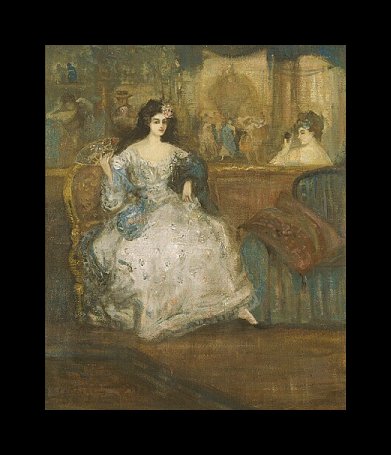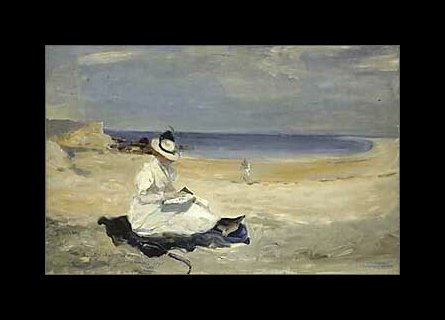Charles Conder (1868-1909)
Get a Conder Certificate of Authenticity for your painting (COA) for your Conder drawing.
For all your Conder artworks you need a Certificate of Authenticity (COA) in order to sell, to insure or to donate for a tax deduction.
Getting a Conder Certificate of Authenticity (COA) is easy. Just send us photos and dimensions and tell us what you know about the origin or history of your Conder painting or drawing.
If you want to sell your Conder painting or drawing use our selling services. We offer Conder selling help, selling advice, private treaty sales and full brokerage.
We have been authenticating Conder and issuing certificates of authenticity since 2002. We are recognized Conder experts and Conder certified appraisers. We issue COAs and appraisals for all Conder artworks.
Our Conder paintings and drawings authentications are accepted and respected worldwide.
Each COA is backed by in-depth research and analysis authentication reports.
The Conder certificates of authenticity we issue are based on solid, reliable and fully referenced art investigations, authentication research, analytical work and forensic studies.
We are available to examine your Conder painting or drawing anywhere in the world.
You will generally receive your certificates of authenticity and authentication report within two weeks. Some complicated cases with difficult to research Conder paintings or drawings take longer.
Our clients include Conder collectors, investors, tax authorities, insurance adjusters, appraisers, valuers, auctioneers, Federal agencies and many law firms.
We perform Charles Conder art authentication, appraisal, certificates of authenticity (COA), analysis, research, scientific tests, full art authentications. We will help you sell your Charles Conder or we will sell it for you.
A book recently published on the artist Charles Conder is entitled ‘The Last Bohemian’ and this is an apt and fitting title for this artist because he was indeed a bohemian whose life story spans several continents.
He was born to British parents who moved to India with him when he was two years old, where his father took a job as a railway engineer. It was the age of the British Empire and he was raised there, as was tradition by an Indian ‘ayah.’ At the age of five his mother sadly died and he was sent back to England by his father to be raised by a friend of his Mothers. Although he left India at a young age to some extent his memories of the country never left him, as they were to influence some of his art later on. At the age of sixteen he expressed to his father, who was still living in India his wish to study art. His father dismissed this idea and promptly made arrangements to send him to New South Wales in Australia to take up an apprenticeship with his uncle as a Surveyor.
He started work with his uncle but constantly carried a notebook with him which he filled with drawings and sketches. Although his father forbade him to be an artist he quickly went against his wishes and in 1886 applied for a job at a firm of Lithographic painters in Sydney, and thereafter he worked as an illustrator at the Illustrated Sydney News. He then moved to Melbourne where he became part as what is known as the Heidelberg school of painters. The Heidelberg school of painters was a group of painters who formed one of the first significant art movements in Australia. He became friends and painted with artists such as Arthur Streeton and Tom Roberts. The paintings that Conder produced in Melbourne were of Romantic Expressionism and landscapes.
However, Conder was not happy to rest in Australia, he had a wandering spirit. When Conder was twenty two his uncle offered to pay for him to go to Paris and study art. He jumped at the opportunity.
After arriving in France he took a studio in the artist’s quarter of Monmartre. The decadent lifestyle at the time in Paris suited him well. He was a charmer and liked to drink and chase women. He quickly made friends with characters such as Henri Toulouse-Lautrec. He loved to frequent the dance halls of the time such as the Moulin Rouge and the colors and life there had a strong influence on much of his work.

Femme dans une Loge au Theater, 1895-1901

Shore at Dornoch, 1896
Success did not come quickly and he had many money and health problems, having contracted syphilis at the age of nineteen whilst in Australia. By 1891 his health was in a state of collapse and an artist friend of his invited him to spend the winter with him in Algeria, thinking that the sunshine would do him good.
On his return from Algeria he quickly fell in love with the French countryside villages running along the Seine, such as Dennemont and Vethueil. In some ways he was following in the footsteps of Monet, whose paintings he greatly admired. He also spent time at Giverny when Monet was there. Conder particularly loved the blossom trees of this region in the spring time and painted them many times. He spent many happy moments in these villages and friends such as Oscar Wilde came to visit him there.
Although Conder is well known for his landscapes, seaside views of Normandy and trees in blossom he is less well known for another art form of which he produced many magnificent examples. These are his water colors on silk.
Throughout his life he produced stunning pieces of art using this on every available medium. This included silk panels, evening dresses, a ball gowns and fans. His watercolors on fans were particularly stunning. However, he was so often in need of money on many occasions he sold these fans for much less than they were worth. These fans are now collector’s items.
Oscar Wilde said on one occasion talking about his fans,
“Dear Conder, always trying to persuade one to buy a fan for ten guineas for which we would happy to pay 20.”

Springtime

Swanage Bay
Two years ago a couple bought a house in one of the French villages where Conder had stayed. Much to their delight they found a number of paintings by him together with letters between him and Oscar Wilde.
So if you happen to buy or inherit an old house which has still got belongings in it, be careful what you throw out, a dusty old fan with watercolors on it, which you think was only used to wave away the summer heat may in fact be a valuable piece of art!
If you believe you own a work of art by Charles Conder, contact Art Certification Experts. We authenticate, appraise, research and provide Certificates of Authenticity (COA's) for works by Charles Conder.
